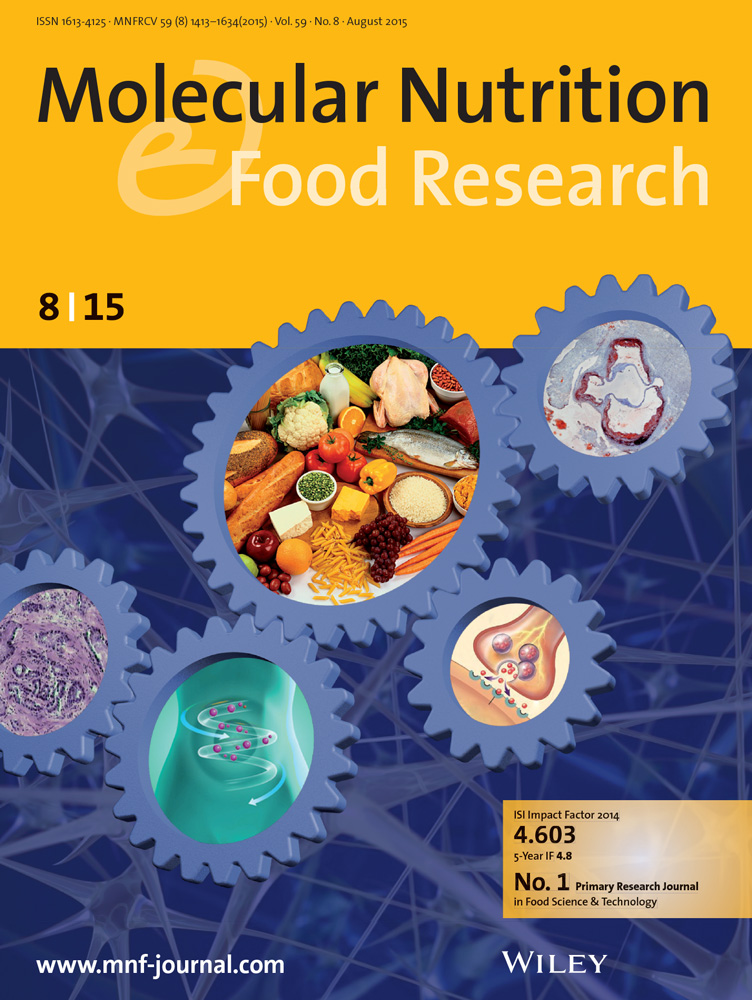揭示不同水果和蔬菜混合干预后人类血液中细胞类型特异性免疫反应
IF 4.2
2区 农林科学
Q1 FOOD SCIENCE & TECHNOLOGY
引用次数: 0
摘要
富含水果和蔬菜(F&Vs)的饮食通过调节血液中的氧化应激、炎症细胞因子和免疫细胞活性来降低慢性病的风险。考虑到外周血及其细胞成分的复杂性,了解细胞类型对F&;V干预的特异性反应仍然是必要的和具有挑战性的。我们使用CIBERSORTx分析来自MiBLEND研究的RNA测序数据的免疫细胞组分和基因表达谱,该研究评估了7种F&;V混合物对慢性疾病标志物、植物化学吸收和血液中基因表达变化的影响。白细胞(WBCs)分析显示,主要白细胞类型的比例没有显著变化。CIBERSORTx测定了22种白细胞亚型的比例,与传统的白细胞组成相关。配对t检验显示,类胡萝卜素、花青素或复杂植物化学物质含量较高的混合物改变了CD4+/CD8+ t细胞比率。摄入Blend 1后,小鼠外周血中记忆B细胞的比例与β -胡萝卜素水平呈显著正相关。最后,DEGs和通路分析表明,一些混合物影响B细胞的DNA修复,浆细胞的NF - κ B信号传导,以及树突状细胞(dc)和自然杀伤细胞(NK)的内吞作用。这些发现为F&;V干预后血液中的免疫细胞动力学提供了更清晰的见解,阐明了其预防作用所涉及的免疫机制。本文章由计算机程序翻译,如有差异,请以英文原文为准。
Unveiling Cell‐Type‐Specific Immune Reactions in Human Blood Following Varied Fruit and Vegetable Blends Interventions
A diet rich in fruits and vegetables (F&Vs) reduces chronic disease risk by modulating oxidative stress, inflammatory cytokines, and immune cell activity in the blood. Given the complexity of peripheral blood and its cellular components, understanding cell‐type‐specific responses to F&V interventions remains essential and challenging. We used CIBERSORTx to analyze immune cell fractions and gene expression profiles from RNA sequencing data of the MiBLEND study, which assessed the impact of seven F&V blends on chronic disease markers, phytochemical absorption, and gene expression changes in blood. Analysis of white blood cells (WBCs) showed no significant changes in proportions of major leukocyte types. CIBERSORTx determined proportions of 22 leukocyte subtypes, correlating with traditional WBC composition. Paired t tests revealed that blends higher in carotenoids, anthocyanins, or complex phytochemicals altered CD4+/CD8+ T cell ratios. A strong positive association was observed between the proportion of memory B cells and beta‐carotene levels in peripheral blood following the consumption of Blend 1. Finally, DEGs and pathway analyses showed that some blends affected DNA repair in B cells, NF‐kappa B signaling in plasma cells, and endocytosis in dendritic cells (DCs) and natural killer (NK) cells. These findings offer clearer insight into immune cell dynamics in blood following F&V interventions, clarifying immune mechanisms involved in their preventive effects.
求助全文
通过发布文献求助,成功后即可免费获取论文全文。
去求助
来源期刊

Molecular Nutrition & Food Research
工程技术-食品科技
CiteScore
8.70
自引率
1.90%
发文量
250
审稿时长
1.7 months
期刊介绍:
Molecular Nutrition & Food Research is a primary research journal devoted to health, safety and all aspects of molecular nutrition such as nutritional biochemistry, nutrigenomics and metabolomics aiming to link the information arising from related disciplines:
Bioactivity: Nutritional and medical effects of food constituents including bioavailability and kinetics.
Immunology: Understanding the interactions of food and the immune system.
Microbiology: Food spoilage, food pathogens, chemical and physical approaches of fermented foods and novel microbial processes.
Chemistry: Isolation and analysis of bioactive food ingredients while considering environmental aspects.
 求助内容:
求助内容: 应助结果提醒方式:
应助结果提醒方式:


